MARKET OVERVIEW
The Global Aerospace Data Recorder market represents an important segment in the aerospace industry, collecting, storing, and retrieving flight-related information. These devices, commonly known as flight data recorders and cockpit voice recorders, have been found to be indispensable in ensuring aviation safety, compliance, and operational efficiency. They are essential in commercial, military, and general aviation, capturing fine details from aircraft systems and communication channels to be used in accident investigations, operational diagnostics, and performance analysis.
The market covers high-end recording systems designed to meet the challenging regulatory requirements and technological advancements. These systems not only record flight parameters but also increasingly are able to meet new demands such as real-time data streaming and improved survivability. As the aerospace industry continues to grow, advanced data recorder technologies will be more widely adopted in response to increasing aircraft system complexity and the requirement for stronger safety.
The Global Aerospace Data Recorder market spans various regions, with key contributions from North America, Europe, Asia-Pacific, the Middle East, and Africa. Different regions have adopted it at different levels due to air traffic growth, regulatory mandates, and improvements in aerospace manufacturing capabilities. North America demonstrates technological development leadership, and Asia-Pacific is hastily adopting due to its high growth in air passenger traffic and investments in the aviation infrastructure.
Manufacturers are constantly innovating to meet the needs of modern aviation. Traditional data recorders are gradually being replaced by next generation ones that provide greater capacity for data storage, improved reliability, and also support emerging communication standards. Features such as deployable recorders, underwater location beacons, and data encryption have become increasingly important, ensuring that critical information can be retrieved even in extreme scenarios. This evolution reflects the industry’s commitment to bolstering aviation safety and operational transparency.
The aerospace industry’s venture into digital transformation is also going to propel the market. The role of data recorders will continue to increase with the emergence of cloud-based systems and advanced analytics. In addition to predictive maintenance and operational decisions, real-time monitoring abilities will cut down on cost and minimize downtime. These new formations are likely to redefine expectations of data recorder systems to encompass not only the traditional recording functions but also connectivity and access to data.
The regulatory environment also goes a long way in determining the Global Aerospace Data Recorder market. Adherence to international standards of safety and guidelines set forth by the International Civil Aviation Organization (ICAO) and Federal Aviation Administration (FAA) compels companies to implement state-of-the-art data recording technologies. Such manufacturers must, therefore, adhere to stringent processes of certification and ensure that the products offered conform to the best standards of performance and reliability.
In conclusion, the Global Aerospace Data Recorder market is one such leader in the face of aviation safety and operational efficiency. The market is characterized by continuous innovation and adaptation to emerging needs. As the aerospace industry advances, this market will have a lot to contribute to ensuring that data recording technologies are updated in line with emerging requirements to promote a safer and more efficient future for global aviation.
Global Aerospace Data Recorder market is estimated to reach $1,943.27 Million by 2031; growing at a CAGR of 5.9% from 2024 to 2031.
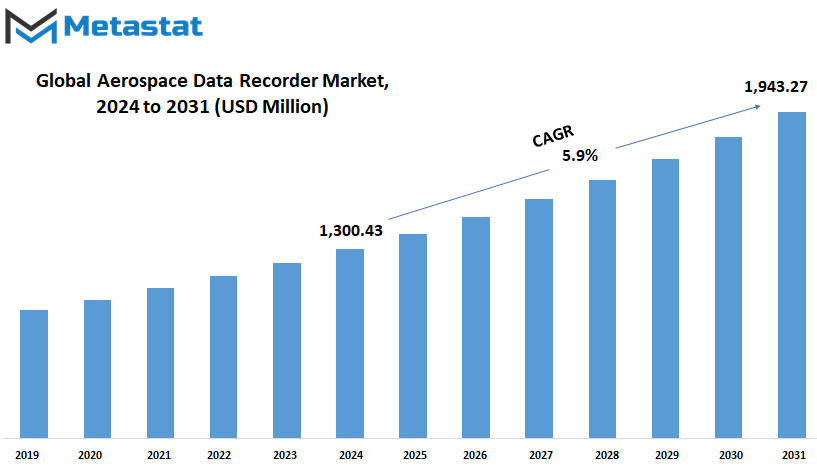
GROWTH FACTORS
The Global Aerospace Data Recorder market is poised to experience immense growth in the near future because of various developments and growing demands for reliable flight data recording systems. Several factors contribute to this growth, such as increasing demand for aircraft safety, advances in aerospace technology, and regulatory mandates for better data collection and monitoring systems in commercial as well as military aircraft. These data recorders are vital for enhancing flight safety as they capture all the vital information regarding an aircraft's performance and operations, which can be analyzed to prevent potential issues and enhance aviation standards. The expansion of the Global Aerospace Data Recorder market is also being driven by the increase in air travel across the globe.
A combination of passenger traffic increase and commercial aircraft growth has heightened attention toward flight data management and monitoring systems. Additionally, new technological improvements in the area of lightweight recorders with large capacity, superior strength, and efficiency have increased in response to industry requirements, especially with the ability to recover data in adverse environmental conditions. However, there are challenges that may impede the growth of this market.
Costly advancements in the aerospace data recorder and the complexity of fitting these systems into currently operated aircraft could be a restraint. Additionally, economic instability in regions and changing defense budgets may be a problem in the widespread adoption of these systems. With such challenges in their way, demand for better aviation safety and the current trend for predictive maintenance is likely to offset those challenges, driving sustained growth. Looking forward, the Global Aerospace Data Recorder market is an opportunity that awaits. The market is expected to boom with the introduction of smart technologies and investments in next-generation aircraft.
The real-time data transmission and cloud-based analytics will revolutionize the capture and use of flight data. In addition, the move toward autonomous aircraft and the implementation of artificial intelligence in aviation systems is likely to increase demand for innovative data recorders that can support such advanced operations.
While certain growth hindrances arise, this marketplace will hold well, thanks to increased need to advance aircraft security and high technologizing prospects in the marketplace. The growth factors will still spur growth through changes and improvement at stakeholder hands in Aerospace Data Recorder global marketplace while heading to efficient travels and reduced incidences in aviating industries across the world.
MARKET SEGMENTATION
By Type
Technological advancement in the aviation industry will bring about the most significant growth to the Global Aerospace Data Recorder market. By 2024, different segments of the market will reach USD 548.23 million for Flight Data Recorders, USD 473.74 million for Cockpit Voice Recorders, and USD 278.46 million for Combined Recorders. Since these devices ensure aviation safety, they are indispensable to the aviation sector.
Flight Data Recorders are one of the major parts of this market, which capture critical flight parameters. The storage of extensive data related to aircraft performance enhances the understanding of operations, providing valuable insights for both routine evaluations and incident investigations. Similarly, Cockpit Voice Recorders contribute significantly by recording in-cabin communications, assisting in identifying communication-related issues or malfunctions during flight. The popularity of combined recorders, which integrate the functions of FDRs and CVRs, is on the rise due to their compactness and efficiency, providing a versatile solution that aligns with the space-saving requirements of modern aircraft designs.
This can be attributed to the growing demand for aircraft safety, which is further amplified by the regulation of advanced data recorders for commercial and military aviation. Data recording systems face more stringent rules by governments and authorities in different parts of the world, which enhances the use of these devices among different fleets. Additionally, advancements in aircraft technology will necessitate more significant data recorders that can manage larger amounts of data.
From a perspective of the far future, innovative breakthroughs from the Global Aerospace Data Recorder industry may be at the forefront of boundaries pushed in collection, storage, and retrieval. For example, advanced technologies of real-time streaming of data into the cloud and analyzing it may eventually become the norms for airlines and manufacturers to improve flight monitoring performance. Additionally, predictive maintenance could be integrated into advanced recorders, reducing potential downtimes resulting in cost reductions for operators as well as safe passengers.
The increasing number of air travelers and expanding global air networks also increase the demand for solid data recorders. As more airlines introduce new-generation aircraft to respond to the demand, the state-of-the-art data recording system will be essential. This dynamic market holds immense potential, as advancements continue to bridge the gap between traditional systems and emerging aviation needs, ensuring the sustained importance of these devices in shaping the future of aerospace safety and operations.
By Technology
The Global Aerospace Data Recorder market is going to witness significant growth as the demand for advanced aviation technologies continues to rise. Data recorders are also known as the black boxes of aircraft. They play a very important role in safety and operational efficiency. They capture all the vital flight data, which helps in investigation and performance assessments. As the technology develops, the market has seen a transition in the ways these products are designed and applied, where companies are shifting more towards making reliable, long-lasting, and storage-intensive recorders.
The two main technologies dominating the market include solid-state recorders and magnetic tape recorders. Due to their robust nature and storage-intensive capabilities, the solid-state recorder is highly favored. Such devices use flash memory, thus reducing the likelihood of damage by extreme conditions like high impact, pressure, or temperature variation. These aspects make them one of the favored devices in contemporary aviation. In contrast, magnetic tape recorders, using the older technology, are gradually being phased out. Although they have been reliable in the past, their limitations in storage capacity and vulnerability to environmental factors make them less suitable for future demands.
The adoption of solid-state recorders is being driven by the aviation industry’s need to introduce more advanced systems in commercial and military aircraft. These recorders allow for more comprehensive data gathering and analysis, which can be used by airlines and manufacturers to optimize their operations. The regulatory bodies are also increasingly making it mandatory for better data recorder capabilities to increase safety standards. For instance, longer recording periods and real-time data transmission are becoming a requirement, which is further driving innovation in the market.
Looking ahead, the Global Aerospace Data Recorder market is expected to align with advancements in other aviation technologies. Features such as real-time data streaming to ground stations are likely to become commonplace, reducing the time needed to retrieve critical information in case of incidents. Additionally, compact and lightweight designs will cater to the increasing emphasis on fuel efficiency and weight reduction in aircraft design.
In summary, the Global Aerospace Data Recorder market is undergoing rapid change. The technology driver in this respect is solid-state technology. This means that future air travel is likely to take off with much greater safety, efficiency, and innovation as more advanced data recording solutions are developed. This represents the market’s potential for long-term growth and technological breakthroughs.
By Application
The Global Aerospace Data Recorder market is one of the leading sectors in determining the future of aviation and influences safety, efficiency, and data-driven insights in its progress. It encompasses the development, production, and application of recorders that are designed specifically for various types of aircraft. These devices, often called “black boxes,” are crucial for recording flight data and cockpit audio, thereby providing a comprehensive record of flight activities. Their importance will only increase with advancements in aviation technology and increased safety requirements.
The market is divided into three application categories: commercial aircraft, military aircraft, and general aviation. In the commercial aviation sector, data recorders play a critical role in ensuring passenger safety and operational efficiency. Airlines depend on these systems to monitor and analyze flight performance, allowing for quicker identification of potential issues and more accurate responses to incidents. As air traffic is expected to grow in the coming years, the demand for enhanced recording technologies will only increase. This calls for advanced systems in which real-time data streaming with predictive analytics shall be integrated; hence, data communication to the ground control should be fast.
In case of a combat aircraft, however, there may be data recorders specifically meant for the application of defense needs. The requirement is for an extreme environment resistance and very secured operation. Military applications therefore put a need on robust recorders that also can be efficient for recording very reliable data capture during missions; post-mission analysis and real time monitoring will tend to push a higher development to achieve advanced data records by integrating up-to-date tools, such as artificial intelligence along with encryption towards achieving security concerns.
In general aviation, the private and recreational aircraft, it is becoming crucial to have more data recorders as the demand for safety goes beyond commercial and military operations. Along with the increasing accessibility of aviation, affordability without compromising recording efficiency will remain a demand; these systems would be smaller in size, even cheaper, and easier to fit into individual and smaller organizations.
Going forward, innovation will continue to benefit the Global Aerospace Data Recorder market. Advancements in materials, miniaturization, and connectivity are likely to characterize the next generation of recorders: smarter and more resilient. The safety and efficiency improvements will come across all applications, and the role of data recorders as an integral part of the aviation industry’s future will be well cemented.
|
Forecast Period |
2024-2031 |
|
Market Size in 2024 |
$1,300.43 million |
|
Market Size by 2031 |
$1,943.27 Million |
|
Growth Rate from 2024 to 2031 |
5.9% |
|
Base Year |
2022 |
|
Regions Covered |
North America, Europe, Asia-Pacific Green, South America, Middle East & Africa |
REGIONAL ANALYSIS
The global Aerospace Data Recorder market is a vital component in modern aviation, one providing the critical tools needed to track and record flight data to assist in safety, efficiency, and regulatory compliance. With an increasing emphasis on advanced technology and safety, the regional analysis of the market presents different trends and opportunities across various portions of the world, signifying a bright future.
North America is motivated by the aircraft manufacturers and other regulatory bodies stressing on the fact that the strictest safety measures must be used. The country is led by the United States, with other important countries including Canada and Mexico. The U.S. is facilitated by the robust aerospace industry and technological progress in the industry, which plays a significant role in the growth of the market. Canada and Mexico are smaller players that are growing their aerospace industries. They are boosted by regional partnerships and trade treaties.
The European region is the other major contributor. The UK, Germany, France, and Italy are leaders in this regard. These nations are recognized for their engineering excellence and significant research and development. The focus of Europe on sustainability and reduction of carbon emissions also influences the Aerospace Data Recorder market, encouraging the development of innovative solutions to monitor aircraft performance efficiently. The rest of Europe contributes with its emerging markets, where growth is driven by increasing air travel and regional partnerships.
Asia-Pacific is one of the fastest-growing regions, driven by rising air traffic and expanding economies such as India and China. The countries are witnessing significant investments in aviation infrastructure, which is growing the demand for advanced data recorders. Japan and South Korea, with their strong technological capabilities, further boost the market. Other parts of the region are catching up, driven by the increasing number of budget airlines and domestic travel.
There is still much scope for growth in South America, particularly in Brazil and Argentina, as the aviation industry gradually increases there. Demand for Aerospace Data Recorders will come with a modernization process to conform to international safety standards in those countries.
The Middle East and Africa also present an opportunity, since GCC countries focus on building modern airports and fleets, while South Africa and Egypt lead in advancing regional aviation. With the development of the region, the uptake of cutting-edge Aerospace Data Recorders is expected to increase steadily.
Each region’s specific characteristics, combined with a focus on technological innovation and safety, will ensure the steady expansion of the global Aerospace Data Recorder market to meet the future needs of the aviation industry.
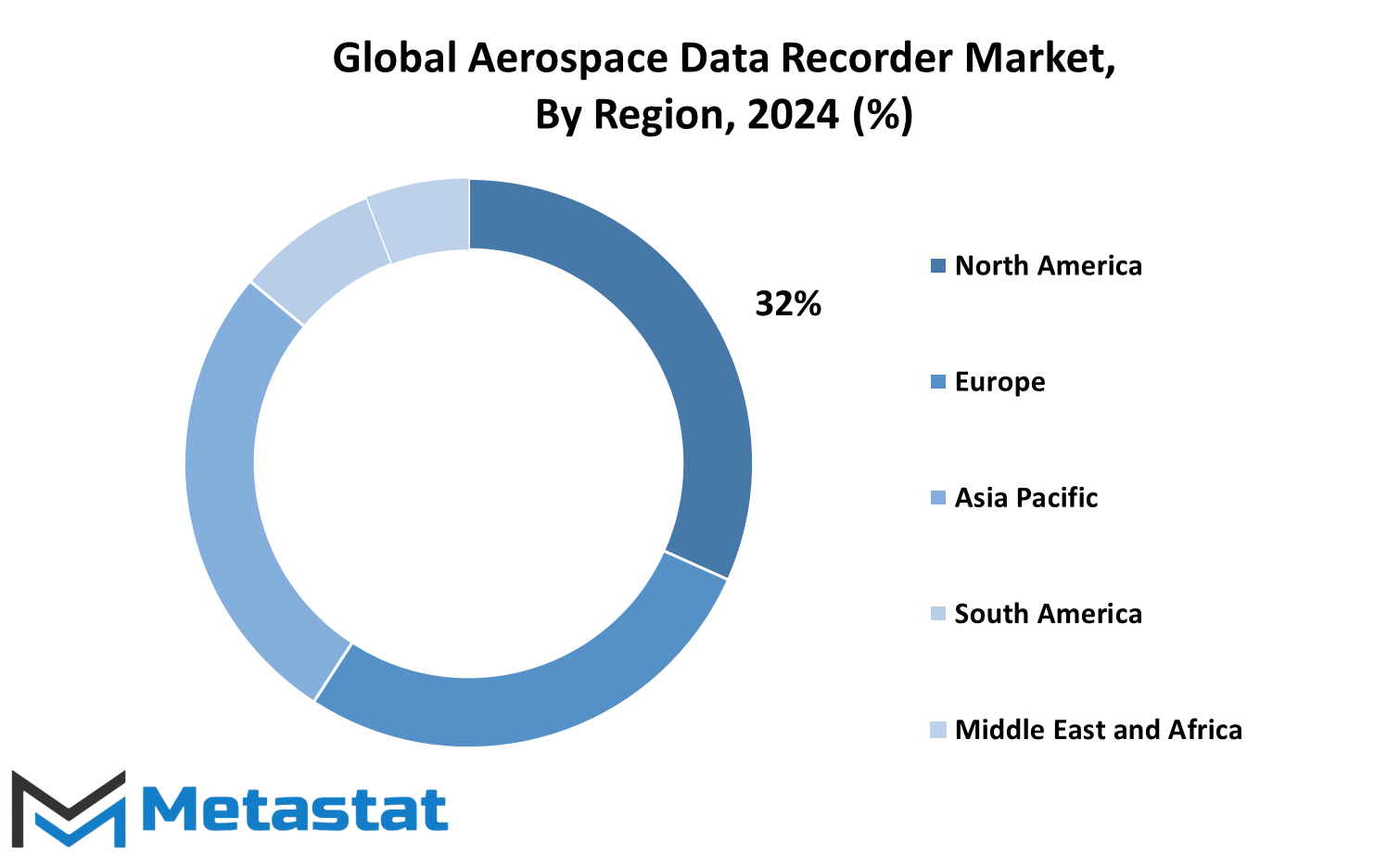
COMPETITIVE PLAYERS
The Global Aerospace Data Recorder market is expected to witness a strong growth curve in the future, as it is supported by technological advancements and the demand for efficient and reliable data recording systems in aviation. As the aviation sector expands with the growth of air travel, the requirement for accurate and secure data collection has become more critical than ever. Data recorders also known as "black boxes" are of paramount importance in ensuring the safety and efficiency of flight operations. They would ensure recording of flight data and cockpit audio, which would be vital for understanding and preventing aviation incidents.
Key players in this industry, like Honeywell Aerospace, L3Harris Technologies, and Curtiss-Wright Corporation, are focused at the very forefront of innovation, aiming at improving the abilities of aerospace data recorders. The firms have been significantly investing in R&D to manufacture items that possess high durability, a much higher capacity of data storage, and high interoperability with present aircraft systems. For example, the production of recorders has become possible to withstand extreme environmental conditions without elevating the entire weight of an aircraft to extraordinary levels through advancement in light weight materials and low energy-consuming constituents.
There is also growing prominence of the firms on real time data streaming along with cloud integration. This shift is transforming the way flight data is collected and analyzed, making quicker decision-making and more effective maintenance planning possible. Companies such as Universal Avionics Systems Corporation and Flyht Aerospace Solutions are working toward including cutting-edge technologies like artificial intelligence and predictive analytics in data recording systems. Such innovations will only help enhance the operational efficiency and safety measures of the aviation industry.
With the regulatory standards becoming progressively stringent across the globe, manufacturers are designing products that adhere to these emerging standards. This is driving competition among the major players, including SLN Technologies, Leonardo DRS, and Flight Data Systems, to design innovative and specific solutions to cater to such changing needs, addressing specific requirements of both commercial as well as military aviation.
Looking ahead, there is a good prospect for the Global Aerospace Data Recorder market in light of the increasing adoption of electric and unmanned aerial vehicles. These emerging segments demand advanced data recording systems with requirements attuned to their operational requirements. Companies like GE Aviation and Elbit Systems are working towards such developments, which would allow the market to witness dynamic growth and innovation. Eventually, all this will lead the aviation industry to higher safety, efficiency, and sustainability levels.
Aerospace Data Recorder Market Key Segments:
By Type
- Flight Data Recorders (FDR)
- Cockpit Voice Recorders (CVR)
- Combined Recorders
By Technology
- Solid-State Recorders
- Magnetic Tape Recorders
By Application
- Commercial Aircraft
- Military Aircraft
- General Aviation
Key Global Aerospace Data Recorder Industry Players
- Honeywell Aerospace
- L3Harris Technologies
- Curtiss-Wright Corporation
- SLN Technologies
- Universal Avionics Systems Corporation
- Leonardo DRS
- Flyht Aerospace Solutions
- Elbit Systems
- GE Aviation
- Flight Data Systems
WHAT REPORT PROVIDES
- Full in-depth analysis of the parent Industry
- Important changes in market and its dynamics
- Segmentation details of the market
- Former, on-going, and projected market analysis in terms of volume and value
- Assessment of niche industry developments
- Market share analysis
- Key strategies of major players
- Emerging segments and regional growth potential



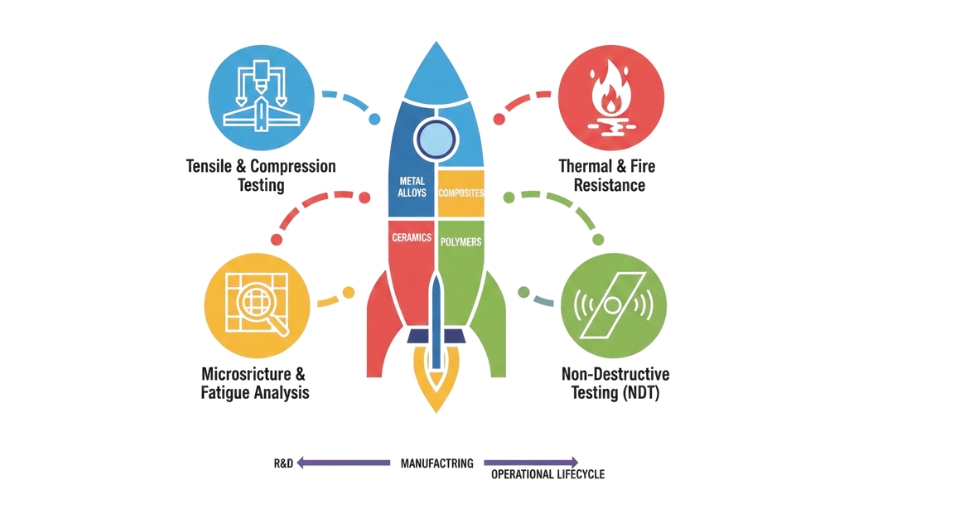
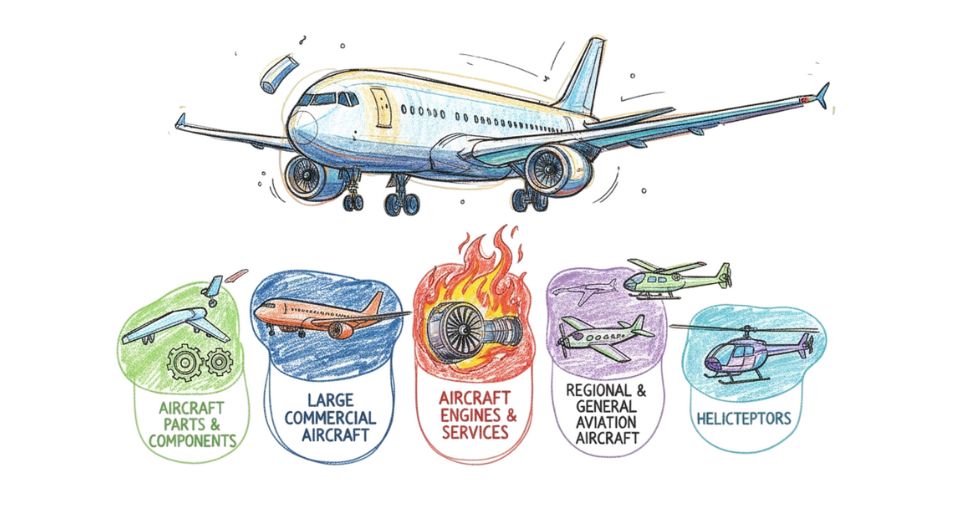
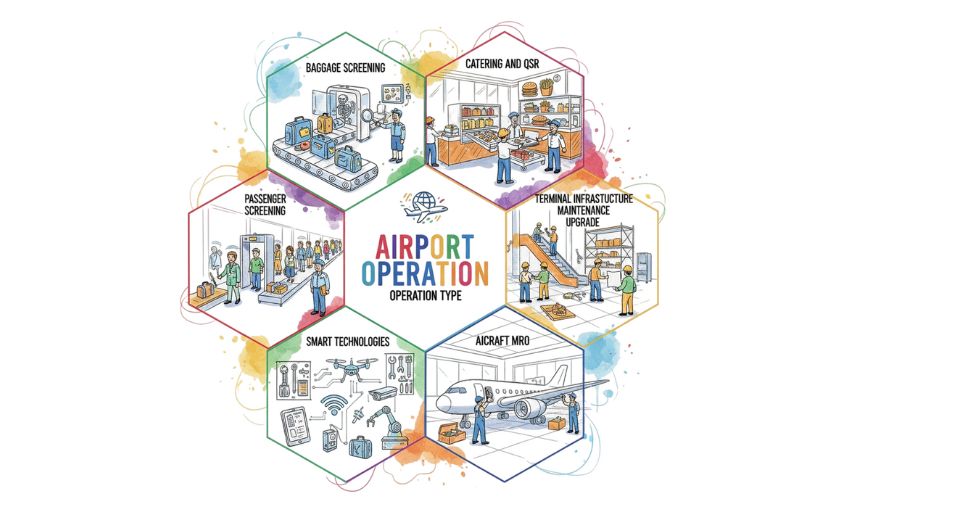


 US: +1 3023308252
US: +1 3023308252






